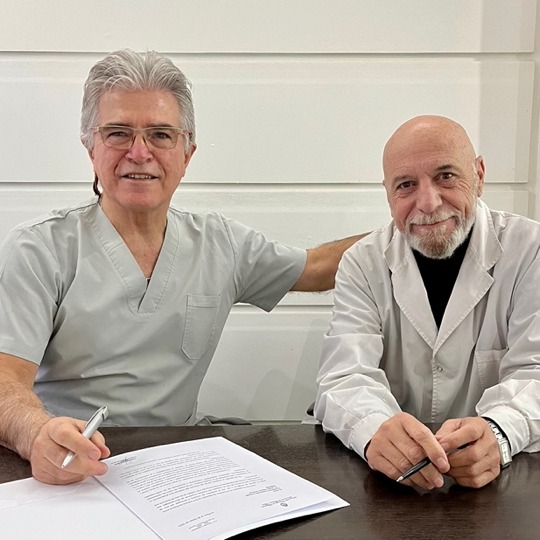The Sacred Heart of Jesus Center of Gastroenterology and the CER Institute of Rheumatology, Immunology and clinical trials, led by PIs Dr. Edgardo Gimenez and Dr. Jorge Velasco Zamora, signed a collaboration agreement to conduct clinical studies on obesity. More about development new molecules in obesity.

Obesity is a major global health issue, and the development of new molecules targeting obesity is an area of intense research. Several novel approaches and molecules are currently under development or in clinical trials, aiming to address obesity through various mechanisms. Here’s an overview of some promising strategies:
- GLP-1 Receptor Agonists (Incretin Mimetics)
- Semaglutide (Wegovy): This is one of the most advanced and well-known GLP-1 receptor agonists, initially developed for diabetes but now approved for obesity management. It works by mimicking the hormone GLP-1, which reduces appetite and increases satiety.
- Tirzepatide: This dual agonist targets both GLP-1 and GIP receptors, showing even greater efficacy in weight reduction in clinical trials compared to existing therapies.
- GIP and GLP-1 Dual Agonists
- These dual agonists are a newer class that targets both glucose-dependent insulinotropic polypeptide (GIP) and GLP-1 receptors. By combining the effects of both hormones, these molecules have the potential to significantly enhance weight loss and improve metabolic outcomes.
- MC4R Agonists
- Setmelanotide: Targeting the melanocortin-4 receptor (MC4R), this molecule has shown promise, particularly in treating rare genetic forms of obesity. It works by regulating appetite and energy expenditure.
- FASN Inhibitors
- TVB-2640: This molecule inhibits fatty acid synthase (FASN), an enzyme crucial for fat production. By inhibiting FASN, it may reduce fat accumulation and contribute to weight loss.
- Combination Therapies
- Researchers are increasingly looking into combining different mechanisms of action to enhance efficacy. For instance, combining a GLP-1 receptor agonist with a GIP receptor agonist or an MC4R agonist might offer superior weight loss benefits compared to monotherapy.
- Targeting Gut Microbiota
- New molecules are being developed to modulate the gut microbiome, which plays a significant role in obesity. By altering the composition of gut bacteria, these therapies aim to improve metabolic health and reduce obesity.
- BAT Activators (Brown Adipose Tissue)
- Activating brown adipose tissue (BAT) is another innovative approach. Molecules that stimulate BAT can increase energy expenditure, thus aiding in weight loss.
- Liver-Targeted Therapies
- Firsocostat: This ACC (acetyl-CoA carboxylase) inhibitor targets liver fat production, addressing the root cause of metabolic dysfunctions that contribute to obesity.
- Novel Hormonal Therapies
- Research is ongoing into new hormones and peptides that regulate appetite and metabolism, such as amylin analogs and oxyntomodulin analogs.
These molecules are in various stages of development, ranging from preclinical studies to advanced clinical trials. The goal is to offer more effective, personalized treatment options for obesity, addressing not just weight loss but also the underlying metabolic dysfunctions.
Edgardo Gimenez MD, PI
Sacred Heart of Jesus
Jorge Velasco Zamora MD, MBA, PI
Rheumatology
CER Research Institute


